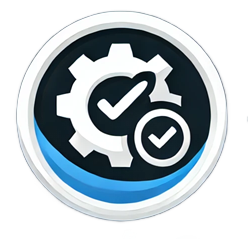Introduction Quality assurance (QA) is the backbone of software development, ensuring functionality, reliability, and user satisfaction. However, the repetitive nature of QA tasks often leads to fatigue and burnout, negatively impacting productivity. Enter gamification, a revolutionary approach that leverages game-like elements to make QA workflows more engaging and effective. This article explores the transformative potential of gamification in QA, offering actionable strategies to create a motivated and high-performing team.

What is Gamification in QA? Gamification involves integrating game mechanics such as points, leaderboards, and challenges into non-game contexts. Within QA, this approach reimagines mundane tasks, transforming them into stimulating activities that:
- Inspire testers to exceed performance benchmarks.
- Encourage collaboration and healthy competition.
- Promote creativity in bug detection and test case development.
By applying these principles, teams can achieve higher levels of efficiency and satisfaction.
Strategies to Gamify the QA Process
- Bug Hunting Leaderboards Create a public ranking system to showcase testers based on the number, severity, and quality of bugs they identify. Recognizing contributions fosters a sense of accomplishment and drives sustained engagement.
- Achievement-Based Rewards Introduce a reward system that offers digital badges, certificates, or tangible perks for accomplishments like discovering critical bugs or creating innovative test scenarios. These rewards can serve as both morale boosters and professional accolades.
- Scenario Challenges Design unique challenges, such as “Find the most obscure bug” or “Develop the most efficient test case,” to stimulate creative problem-solving and push boundaries.
- Time-Limited Tasks Introduce time-sensitive objectives, such as completing a testing cycle within a set timeframe to instill a sense of urgency and improve focus. Recognize teams or individuals who excel under pressure without compromising quality.
- Team-Based Missions Foster collaboration through group challenges. For instance, set a weekly goal to log a collective number of high-priority bugs, with shared rewards to strengthen team cohesion.
Benefits of Gamifying QA
- Enhanced Engagement: Gamified tasks turn routine testing into an interactive and fulfilling experience.
- Boosted Productivity: Clear goals and competitive elements inspire testers to deliver their best work.
- Stronger Collaboration: Team missions encourage open communication and unified efforts.
- Stress Reduction: Infusing fun into tasks alleviates burnout and enhances well-being.
Integrating AI for Gamified QA Platforms powered by AI, as highlighted on EngineeredAI.net, AI and Gaming: How AI is Transforming Play, Work, and Productivity can streamline gamification efforts. Tools like automated leaderboards, performance tracking dashboards, and personalized feedback systems can significantly amplify the impact of gamification, reducing administrative overhead for managers.
Remote Work Considerations For remote QA teams, gamification bridges gaps caused by physical distance. Strategies include:
- Leveraging cloud-based platforms to track progress and share achievements in real-time.
- Encouraging participation in virtual leaderboards and reward systems.
- Building camaraderie through team-focused challenges, reinforcing principles explored on Gaming for Remote Workers: Boosting Productivity, Creativity, and Mental Health.
Cross-Benefits with Health and Productivity Gamification not only enhances QA workflows but also contributes to mental well-being. By making work enjoyable, it aligns with wellness practices championed by HealthyForge.com in the post Gaming for Wellness: How Play Can Boost Your Mind and Body. Similarly, the structured goals and rewards echo productivity methodologies from MomentumPath.net, like How Gaming Can Supercharge Your Productivity: Boost Focus, Creativity, and Time Management.
Conclusion Gamification has the power to reshape QA processes, transforming monotonous tasks into engaging, rewarding experiences. Whether applied to in-office or remote teams, these strategies promise higher efficiency, better collaboration, and happier testers. Begin small, embrace the creative potential of gamification, and watch your QA team thrive—because testing doesn’t have to be tedious to be impactful.

4 thoughts on “Gamifying QA: How Gamification Enhances Software Testing Efficiency and Reduces Burnout”